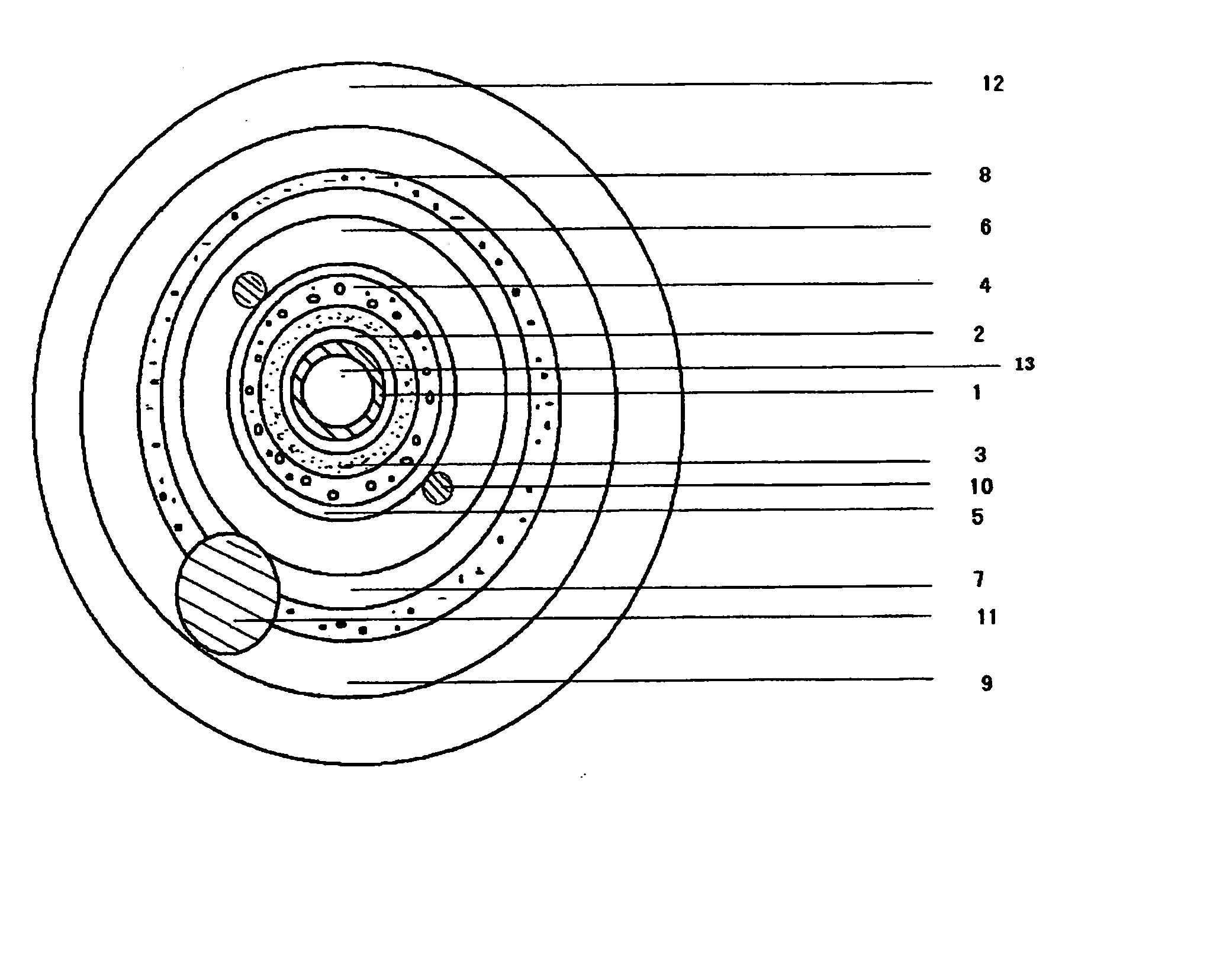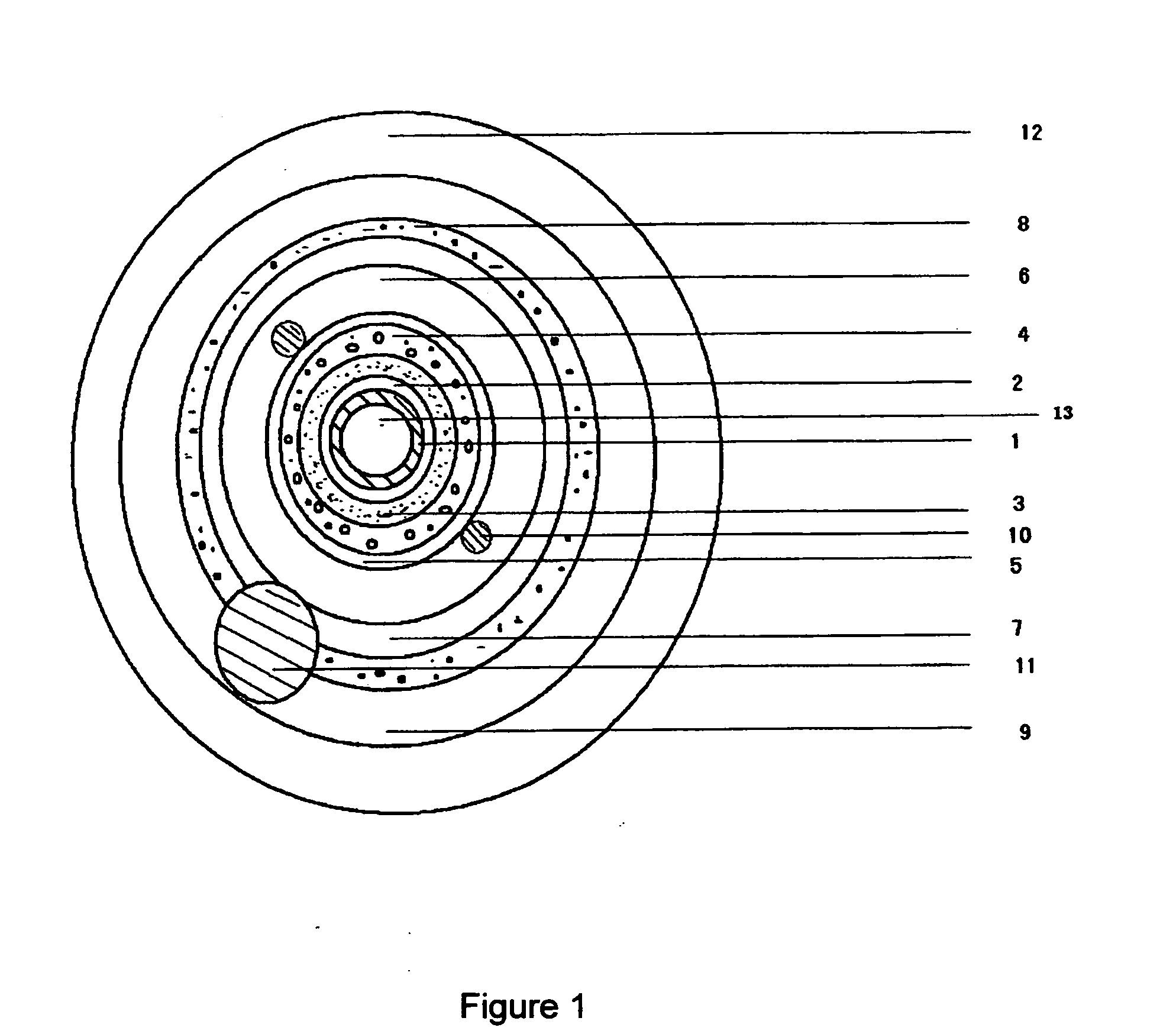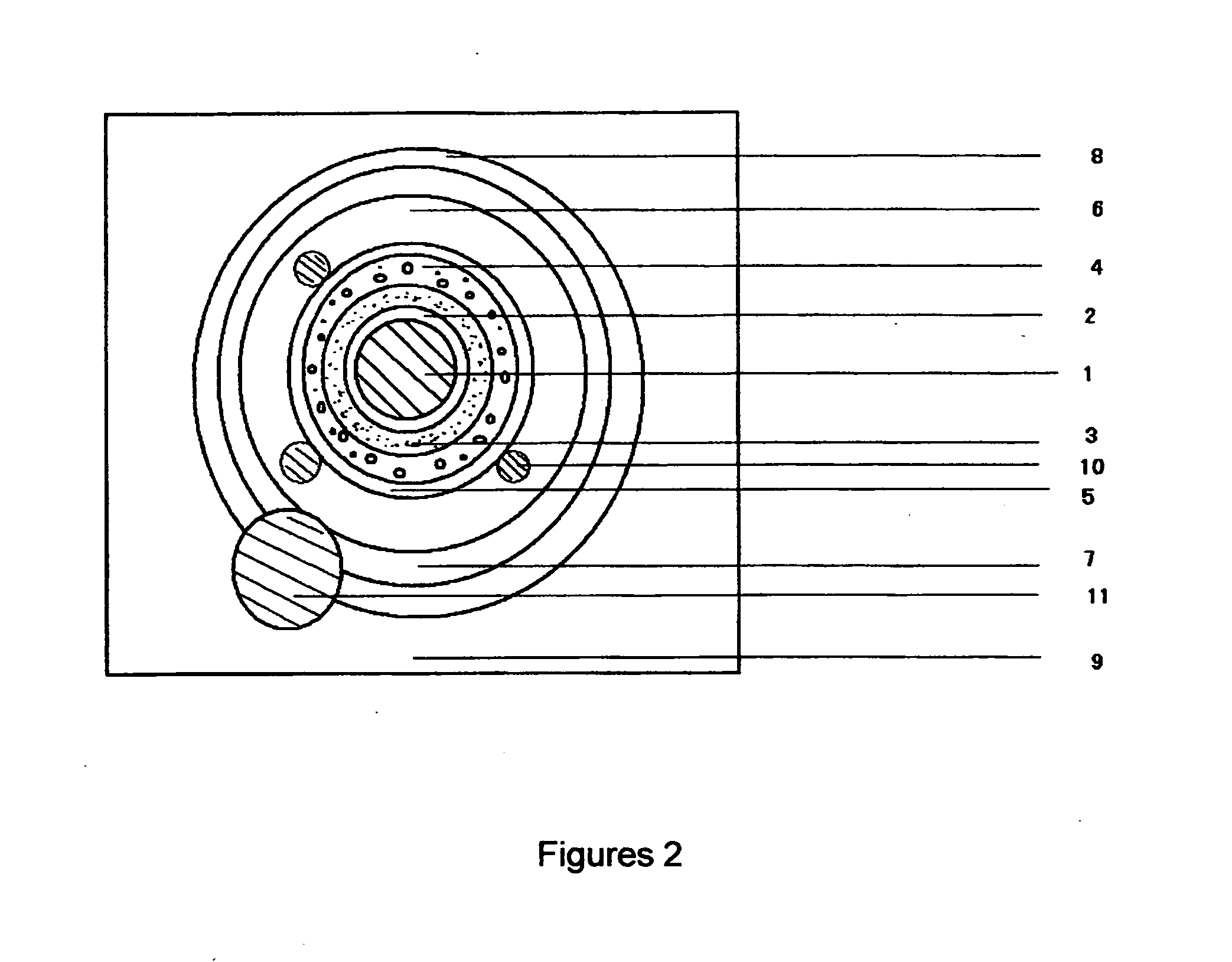Electroluminescent Wire
a technology of electroluminescent wire and wire, which is applied in the direction of discharge tube luminescnet screens, inorganic insulators, non-metal conductors, etc., can solve the problems of limited application in all perspectives, unstable, and short-lived final produ
- Summary
- Abstract
- Description
- Claims
- Application Information
AI Technical Summary
Benefits of technology
Problems solved by technology
Method used
Image
Examples
Embodiment Construction
[0033] Referring to FIG. 1, the electroluminescent wire of the present invention comprises a continuous base wire 1, plated with a metal modified layer 2. The metal modified layer 2 is coated with a dielectric layer 3. The dielectric layer 3 is coated with a luminous layer 4 made of an electroluminescent material of one or more colors. The luminous layer 4 is coated with a transparent conductive layer 5, which is connected with 1 to 4 outer protective conductive wires 10. The outermost layer is sealed by a plurality of transparent or translucent plastic tubes 6-9, wherein the innermost layer 6 is prepared by fluoroplastics. It is noted that fluorescent dye or paint is added into at least one layer of the plastic tubes 7 to 9. A continuous metal wire 11 with a predetermined hardness is inserted into at least one layer among the plastic tubes 7 to 9, and the surface of the metal wire has a predetermined brightness that can increase the luminescent intensity by over 20%. The scattering...
PUM
| Property | Measurement | Unit |
|---|---|---|
| temperature | aaaaa | aaaaa |
| diameter | aaaaa | aaaaa |
| diameter | aaaaa | aaaaa |
Abstract
Description
Claims
Application Information
 Login to View More
Login to View More - R&D
- Intellectual Property
- Life Sciences
- Materials
- Tech Scout
- Unparalleled Data Quality
- Higher Quality Content
- 60% Fewer Hallucinations
Browse by: Latest US Patents, China's latest patents, Technical Efficacy Thesaurus, Application Domain, Technology Topic, Popular Technical Reports.
© 2025 PatSnap. All rights reserved.Legal|Privacy policy|Modern Slavery Act Transparency Statement|Sitemap|About US| Contact US: help@patsnap.com



